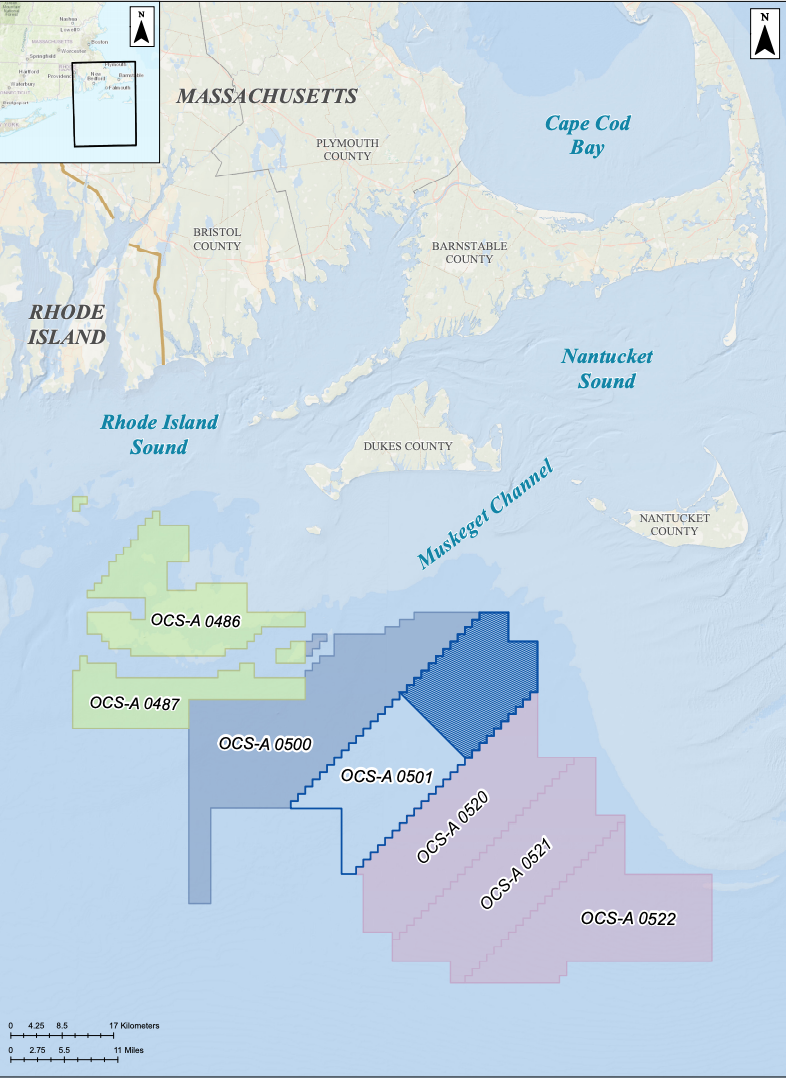Avangrid executives say they expect federal regulators to issue a final decision on the Vineyard Wind offshore wind plan in coming days, and to be sending energy into Massachusetts in 2023 with the first truly utility-scale U.S. project.
In its 50/50 venture with Copenhagen Infrastructure Partners, Avangrid has secured all major contracts for construction, including agreement with Foss Maritime to supply U.S. flag transport of components for installation offshore of southern New England by Belgium-based DEME Group’s wind turbine installation vessel.
After the federal Bureau of Ocean Energy Management finished its environmental impact statement for Vineyard Wind in March, “a record of decision is expected very soon here in May,” Avangrid CEO Dennis Arriola said during the company’s May 4 earnings conference call.
Vineyard Wind would be the first large utility-scale offshore wind project in U.S. waters after the five-turbine, 30 megawatt Block Island Wind Farm pilot project off Rhode Island. Looking ahead Avangrid has the potential for 7.5 gigawatts of capacity now in federal leased areas off the East Coast, said Arriola.
“Our strategic offshore wind investment positions are projected to start delivering growth and financial results in 2024,” he said. Vineyard Wind should be in full operation that year, and the partners now are in final stages of setting up financing and tax equity for the project, said Arriola.
Beyond Vineyard Wind, Avangrid and Copenhagen Infrastructure Partners are working on their Park City 804 MW project, with power purchase agreements in place with Connecticut utility companies and plans to deliver power in 2025. Avangrid also has its own Kitty Hawk project planned off North Carolina, with hopes to develop a total 2,500 MW capacity, and sending power onshore to that state and Virginia in the late 2020s.
The company is also watching for expected future lease offerings by BOEM in the New York Bight region, said Arriola.
Vineyard Wind’s progress through the federal regulatory process was fraught with drama, from the Trump administration’s move in December 2020 to cut off the project’s environmental review, to the Biden administration’s reversal a few months later. The Bureau of Ocean Energy Management completed the environmental impact statement in March and a final record of decision will be the last step before the developers start work.
That decision, and the Biden administration’s stated intention to have as many as 10 offshore wind proposals under environmental review this year, could trigger new investments in the U.S. offshore wind market.
The biggest challenge is building new wind turbine installation vessels under the U.S. flag, at around $500 million each, as global offshore wind industry growth puts more demand on foreign-flag WTIVs.
On the same day as Avangrid’s earnings call the partners announced a contract with U.S. cable manufacturer Southwire to supply more than 32 miles of high-voltage cable for onshore transmission of power from the Vineyard Wind landfall locations.
After production at Southwire’s Huntersville, N.C., plant, the cable will be installed for completions in the first quarter of 2023, ready to handle power from the offshore array of GE Haliade-X turbines that will started being installed at seas in summer 2023, the companies say.




